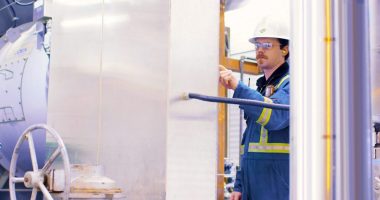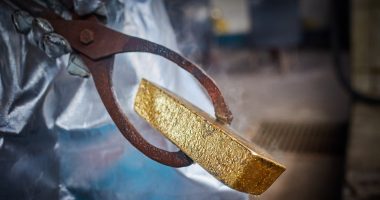Vancouver-based Sego Resources (TSXV:SGZ) is a copper-gold mining company focused on its 100-per-cent-owned Miner Mountain Project, more than 2,000 hectares in size and located northeast of Princeton, B.C.
Joining me in studio to talk about all things Sego, including its recent financing, upcoming drill plans and an environmental care award, is CEO Paul Stevenson.
TMH: Paul, give me the quick background (and your approach) on SEGO Resources.
Stevenson: When we first approach a porphyry copper project, we go through a few steps and the first is, is it a true porphyry system? We need to identify certain alteration minerals, that sort of thing to say, yes, it is. And then does it contain copper and gold? That’s very significant and importantly, can it make grade, a homogenous low-grade deposit isn’t what we’re looking for. We need some higher grades to make it all worthwhile.
And what are the extra costs to explore? Do we have to put in a camp? How do we get fuel? What’s the local infrastructure? And porphyry coppers are infrastructure intensive. So where’s the nearest port, and how do we get our concentrate there if we make a mine, and how do the local community and First Nations feel about mining?
I don’t want to go where I’m not welcome. I recognize aboriginal rights and title, therefore we contact the First Nations before we even acquire the ground and before we started work, we signed a memorandum of understanding with the local First Nations.
TMH: The focus is your Miners Mountain Copper Gold Project. What makes this property exciting for investors?
Stevenson: I think the exciting thing is it is a number of targets. It’s not one and that’s common with alkalic porphyries. The Cuba Zone is a large IP chargeability anomaly. We confirmed higher grade early on with drill hole 19, which intersected from bedrock surface, a hundred metres of 0.95 copper and half a gram of gold, but our data showed us that this was an upper portion definitely of a copper-gold porphyry but it was offset.
Doing our data review, we realized that one hole had gone through that lower zone and back into the copper-gold porphyry. And it bottomed in 11 metres of 0.6 per cent copper, 0.12 gold and contained 4 metres of 1 per cent copper with half a gram of gold. We also tested a 2-metre section for platinum group metals and got 0.13 palladium. And that’s an indicator for alkalic copper-gold porphyries.
TMH: What is the advantage of your strategy in terms of the number of rigs and location of your project?
Stevenson: Our biggest advantage revolves around our location. We’re in a semi-arid zone with limited snow. We’re 20 minutes from the town of Princeton. We can winter drill, we can add rigs and service them easily when we begin drilling off resources.
TMH: And what can you tell me about the drill plans?
Stevenson: As I mentioned, we’ll start by drilling in the Cuba Zone at depth and the south zone (or Southern Gold Zone) will follow. It was discovered by trenching, drilling on section (and) has shown this zone is approximately 250 by 150 metres wide, drilling to a hundred meters depth, open to depth and averages just under one gram per ton gold.
The New Afton mine has a very similar gold zone, sub-vertical, and just to the north of it, through alteration, is their ore body. So we’ll be drilling to the north as well to intersect that.
TMH: What does a resource estimate look like for this property – when can you start to build this out?
Stevenson: One short hole, a 140-metre hole, in the Southern Gold Zone will give us the information we need to produce a maiden inferred resource on the gold zone.
We’ll then turn the drill around and drill to the north for the copper-gold porphyry. We anticipate drilling this after our initial Cuba Zone drilling because in the Cuba Zone, we’re going directly into a copper-gold porphyry.
TMH: If we can just also touch on your recent private placement financing raise. Maybe just give me some quick details on that and what the funds will be used for.
Stevenson: We’re doing a raise of $400,000 in critical minerals flow through, which is really important. Regular flow through, you get your hundred percent flow through a 20 per cent tax credit from British Columbia and a 15 per cent tax credit from Canada. Critical minerals gives you an additional 15 per cent for a total of 30 per cent tax credit from Canada.
So it’s the best flow-through tax break you can get and we’ll use that for the drilling in January.
TMH: You are very passionate and have been in the industry since you were 15 … how does your experience and your team’s contribute to the project’s success?
Stevenson: I think our biggest advantage would be with our background is that we’re methodical explorers. We utilize the science, we use thin sections, geology, geochemistry, geophysics. And we drill on section, as I mentioned before, so that we can put together where the mineral’s going and importantly what the faults and structures are doing.
TMH: You recently received an award for environmental care. Tell us about that.
Stevenson: Well, that wasn’t really us. You mentioned our backgrounds. Our backgrounds are mainly in central and northern British Columbia, but the First Nations provided us with a fellow with expertise in semi-arid desert area.
And what Bob (Dennis) would do is when we were trenching, he would dig the trench separating the top soil from the till and put it back together properly. We would seed and fertilize the AME BC and the Ministry of Mines both use photos from his work to show people how to trench properly.
And I should note as well, every drill hole, as soon as the drilling is finished on that hole, the drills move, we recontour the site and reseed and fertilize.
TMH: What are your investor expectations for 2024? What are your next steps and timelines?
Stevenson: We plan to start drilling in January and intersect the deeper resource on the Cuba Zone and follow up to intersect a New Afton-style copper-gold porphyry, hopefully, in the Southern Gold Zone.
I believe at this point we’re at the bottom of the markets and discoveries in critical minerals will greatly enhance shareholder value.
TMH: What are your thoughts on gold and copper prices for 2024?
Stevenson: Two years ago we were wondering if we’d ever see $4 copper again, but China’s importing as much as or more copper than they did during their phase of infrastructure building.
They’re importing this copper because they are going big into renewable energy, upgrading their electrical grid. All of these things take copper. Western countries are mandating electrification. So I’m very, very positive on copper.
Gold is on an upturn, and I expect better gold values over the next year or so. With these fundamentals, I expect junior companies to execute a rapid turnaround and great growth coming.
Sego Resources Inc. trades on the TSXV under the symbol SGZ, and you can stay updated at www.segoresources.com.
Join the discussion: Find out what everybody’s saying about this stock on the Sego Resources Inc. Bullboard forums, and check out the rest of Stockhouse’s stock forums and message boards.
This is sponsored content issued on behalf of Sego Resources, please see the full disclaimer here.




